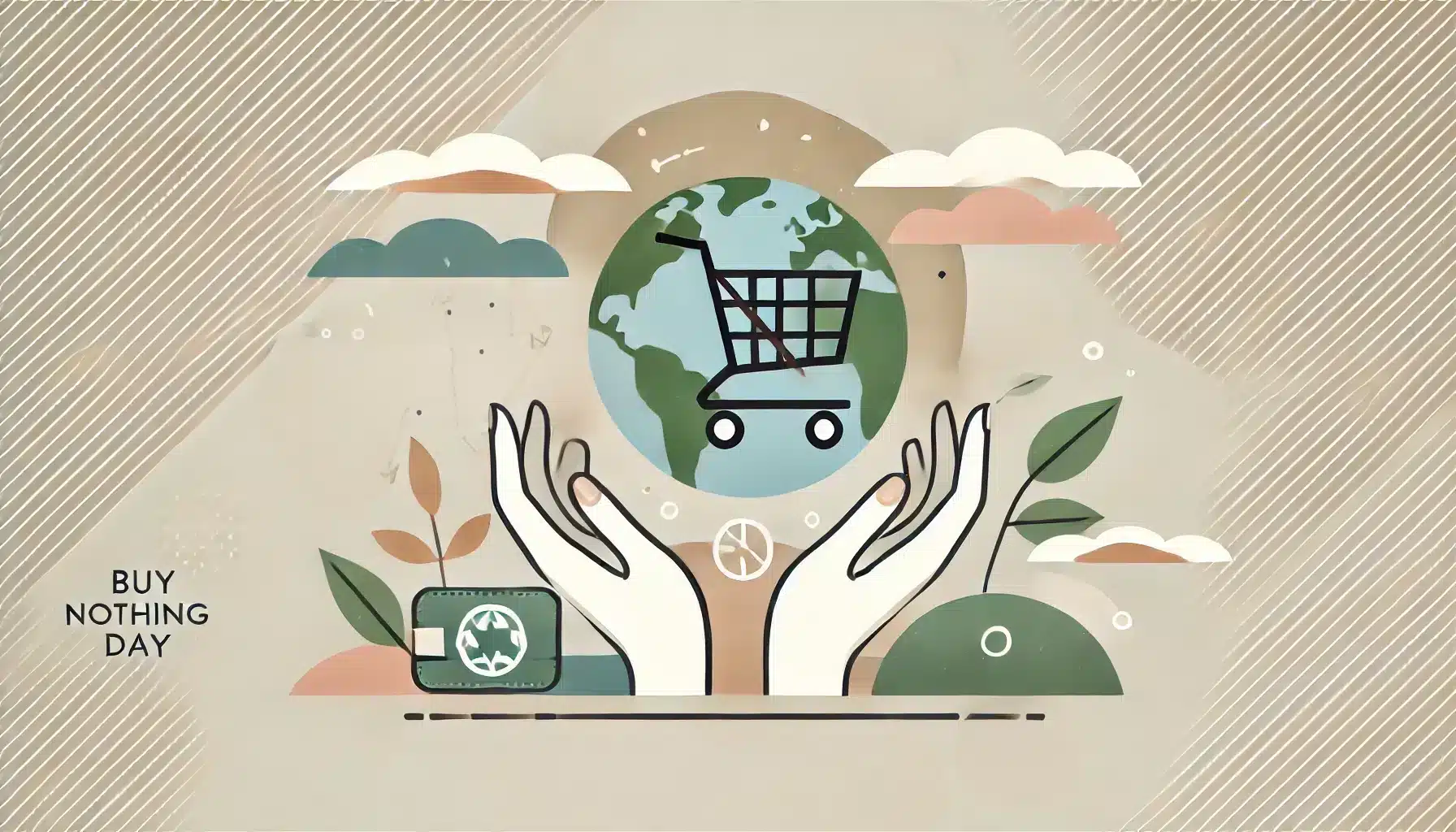What is Buy Nothing Day?
Buy Nothing Day, observed annually on the day after Thanksgiving in the United States, coincides with Black Friday, the busiest shopping day of the year. This event encourages individuals to refrain from shopping for 24 hours, providing an opportunity to reflect on the impact of consumerism on the environment, society, and personal well-being. By challenging the culture of mass consumption, Buy Nothing Day promotes mindful living and sustainability.
History and Origin
Buy Nothing Day was first conceptualized in 1992 by Ted Dave, a Canadian artist, as a response to the growing consumer culture. In 1997, the Canadian anti-consumerist magazine Adbusters brought the movement to the United States, strategically aligning it with Black Friday to highlight the stark contrast between consumerism and the environmental and social consequences of overconsumption.
The day has since gained global recognition, with over 65 countries participating in various forms. In the U.S., it serves as a counterbalance to the frenzy of Black Friday, urging people to question the necessity of their purchases and prioritize sustainability over materialism.
Who Celebrates Buy Nothing Day?
- Environmental Activists: Individuals and organizations advocating for reduced consumption to mitigate environmental harm.
- Sustainability Enthusiasts: Groups and individuals promoting conscious consumption and the reduction of waste.
- Conscious Consumers: People who use the day to reflect on their shopping habits and make sustainable choices.
- Community Groups: Local organizations hosting events like repair cafes, swap markets, or freecycle initiatives to promote reuse and sharing.
- Educational Institutions: Schools and universities that educate about the environmental and social impacts of consumerism.
Themes and Slogans
The themes of Buy Nothing Day revolve around reducing consumption, promoting sustainability, and rejecting consumerism. A core theme is “Less is More,” highlighting the value of simplicity and mindfulness. Another key theme, “Consume with Care,” emphasizes the importance of thoughtful and intentional purchases. A widely used slogan, “Shop Less, Live More,” encapsulates the spirit of the day by encouraging people to find fulfillment beyond material possessions.
Colors, Symbols, and Patterns
Colors
- Green: Representing sustainability and environmental awareness.
- Blue: Reflecting the planet and its finite resources.
- Gray: Symbolizing simplicity and minimalism.
Symbols
- Closed Wallet: Representing the choice to abstain from spending.
- Shopping Cart with a Slash: A universal sign of rejecting consumerism.
- Circular Arrows: Symbolizing recycling and the circular economy.
Patterns
- Minimalist Designs: Emphasizing simplicity and the rejection of excess.
- Nature Motifs: Highlighting the connection between reduced consumption and environmental health.
- Abstract Lines: Representing change and breaking free from consumer habits.
Most Used Hashtags
- #BuyNothingDay
- #ConsciousConsumerism
- #SustainableLiving
- #ShopLessLiveMore
- #MindfulConsumption
How to Celebrate Buy Nothing Day
There are many ways to participate in Buy Nothing Day and contribute to its message of sustainability and mindful living:
- Engage in Local Events: Many communities organize activities like swap markets, repair cafes, or free markets to promote reuse and sharing.
- Host a Swap Party: Invite friends, neighbors, or family to exchange items they no longer need, promoting the reuse of goods and reducing waste.
- Disconnect from Consumerism: Avoid advertisements and online shopping platforms for the day to reduce the urge to spend.
- Educate Yourself: Learn more about the environmental, social, and personal impacts of consumerism through books, documentaries, or workshops.
- Spend Time in Nature: Use the day to enjoy outdoor activities and reconnect with the environment, reinforcing the value of experiences over possessions.
- Advocate for Change: Use social media or community platforms to share the importance of mindful consumption and encourage others to participate in Buy Nothing Day.
Why is Buy Nothing Day Important?
Buy Nothing Day is significant because it challenges the societal norms of consumerism and raises awareness about the need for sustainability. By pausing consumption for one day, individuals can reflect on the environmental damage caused by overproduction, the ethical concerns surrounding labor practices, and the psychological impact of materialism.
The day also fosters community connections by encouraging sharing, repairing, and reusing instead of buying. It serves as a powerful reminder that true happiness and fulfillment come from relationships, experiences, and mindful living, not from accumulating possessions. Buy Nothing Day is a call to action for a more sustainable and equitable world.
Contact Info
Day after Thanksgiving: Buy Nothing Day (United States)
Why do you keep falling for the same type?
Read the article Lovemaps: the hidden blueprint of our love.

